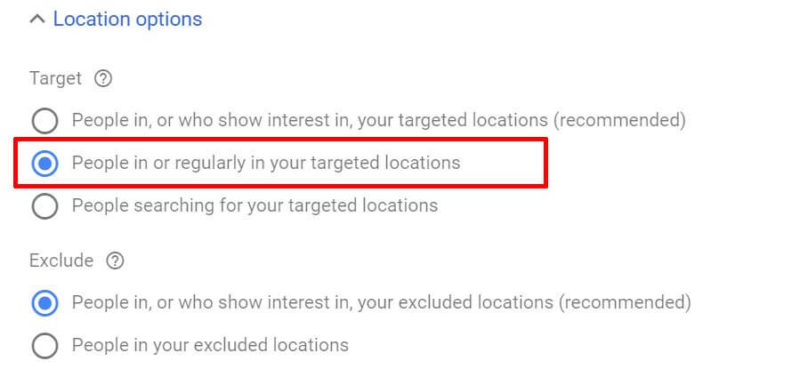Google is expanding when it shows ads to ‘people in targeted locations’
The advanced location targeting option update is aimed at reaching commuters -- whether they're at home, work or on the road.
Google has been quietly rolling out a change to the location targeting options in Google Ads. The change was first spotted in display campaigns, but now appears to have rolled out for search and shopping campaigns, too.
What’s changing? Google has changed the “People in your targeted locations” option to “People in or regularly in your targeted locations.”
The old setting of “Reach people in your targeted locations” did not include showing ads to people “who searched for your target locations but whose physical location was outside the target location at the time of searching.” (The help page had not been updated to reflect this roll out at the time of publication.)

Source: Google Ads help page prior to the change
With this change, instead of showing ads to people only when they are physically located in your targeted locations at the time of their search, it will also include people who regularly commute or travel to your targeted locations even when they aren’t physically there when they perform a search.
The idea is your location-targeted campaigns can reach people with ads targeted to their work locations when they are home and vice versa.
Why we should care. The change is somewhat subtle, but important to note. It’s another lever of targeting control getting supplanted by machine learning. Andrea Cruz, digital marketing manager at KoMarketing Associates, first alerted us to the change when she noticed it in display campaigns in mid-May. “This makes sense if you are targeting commuters,” said Cruz. But, as she notes, Google doesn’t tell us what the criteria is for someone to be considered regularly located in your target area. The frequency and recency factors could make a difference to some businesses. There is no reporting that shows advertisers volume or performance breakouts by “people in” versus “regularly but not currently in.”
“It would be great to have both options,” said Cruz. “Keep people who are in your targeted location, and as separate option, people who are regularly in your targeted locations.”
Digital marketing consultant and CEO of SEMCopilot Ted Ives noticed the change this week. “Although my default reaction to these sorts of changes is to be skeptical,” he said, “I do think in this case it will result in incremental high quality traffic coming in for advertisers. We live in a mobile world…that means people move around a lot; people we target during the day don’t disappear at night, they go home. Why not get your message in front of them there? So, I think this is a helpful change in the paradigm; probably even an overdue one.”
Contributing authors are invited to create content for Search Engine Land and are chosen for their expertise and contribution to the search community. Our contributors work under the oversight of the editorial staff and contributions are checked for quality and relevance to our readers. The opinions they express are their own.
Related stories
New on Search Engine Land
